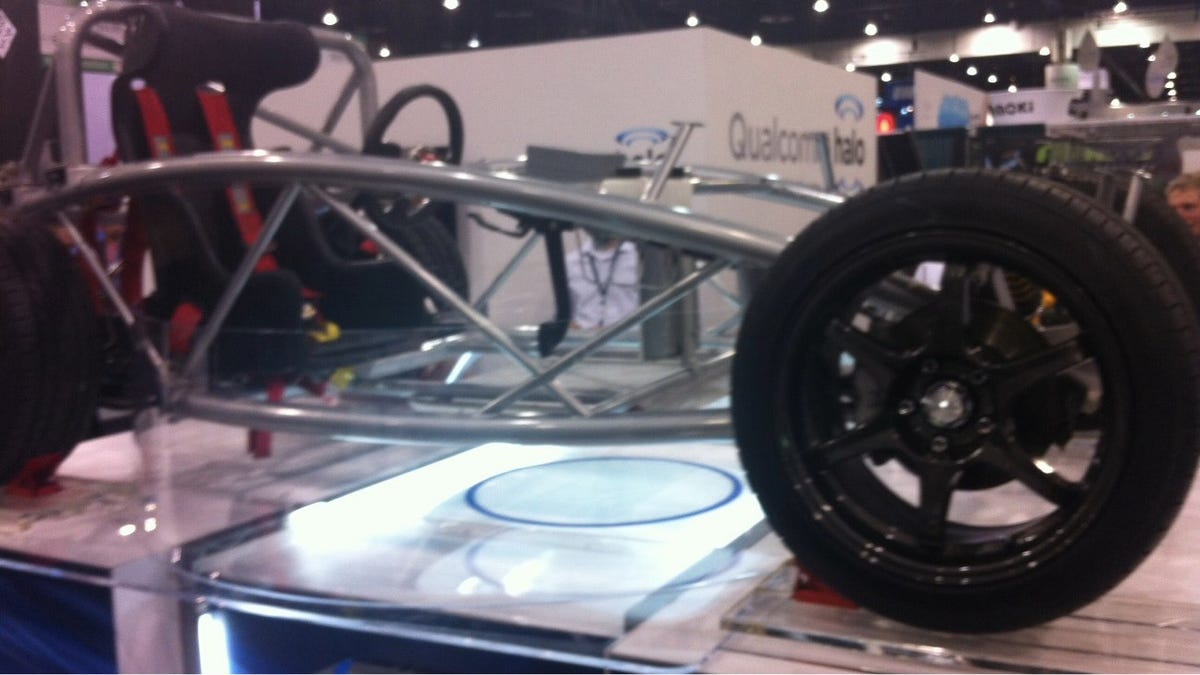Qualcomm Halo charges your car without cables, or even stopping
Wireless charging system uses magnetic induction to transfer power even more efficiently than cables.

Qualcomm is working on the second generation of the Halo inductive charging system for electric cars that it acquired last year from HaloIPT.
Like inductive charging systems being worked on at Mercedes-Benz and Nissan, the Halo uses an inductive emitter installed in, or on, the street, and a receiver on the bottom of the car. The new second version uses a smaller car-mounted charging plate, only 14 by 8.5 inches (and one inch thick).
Unlike the inductive "paddle" chargers in the GM EV-1, the Halo system works over a fairly large air gap, up to two feet. I was told the system can handle about 2KW of power. Dual coils in the receiver allow the system to "direct the magnetic flux" so that power can be transferred with up to 90 percent efficiency (as good or better than a cabled system) even if the receiver plate isn't aligned precisely over the emitter.
The FAQ for the system does sound a little ominous about the spillover of the lost 10%, though, particularly when it comes to interaction with medical devices.
Qualcomm has some interesting visions for this technology. First, since each car has a unique identifier that's transmitted over the Halo system before charging can start, the Halo could handle billing directly. You wouldn't have to pay at a meter or anything, just authorize the system to charge you for your charging, if you're not sitting on the plate in your own garage. "You could roam like with a cell phone," a spokesperson told me.
Second, Qualcomm is batting around the idea of charging on the go. They think it'd be possible to embed charging plates in street or highway lanes so a car could pick up a charge as it drives over. That's obviously a project for the future, as it sounds technically plausible, if not economically so.
The Halo system is currently in trials in the U.K.

